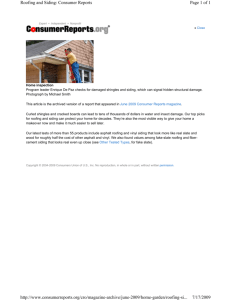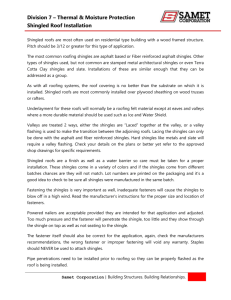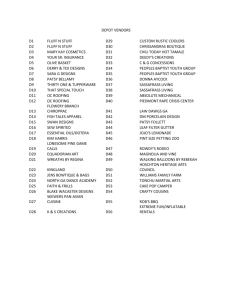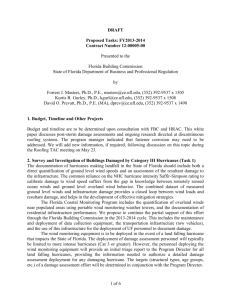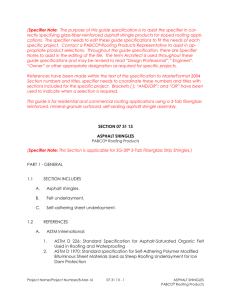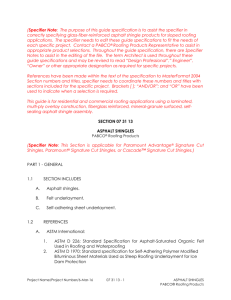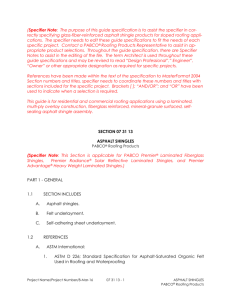Title: Cold Weather Roofing Winter roofing is not for the faint of heart
advertisement
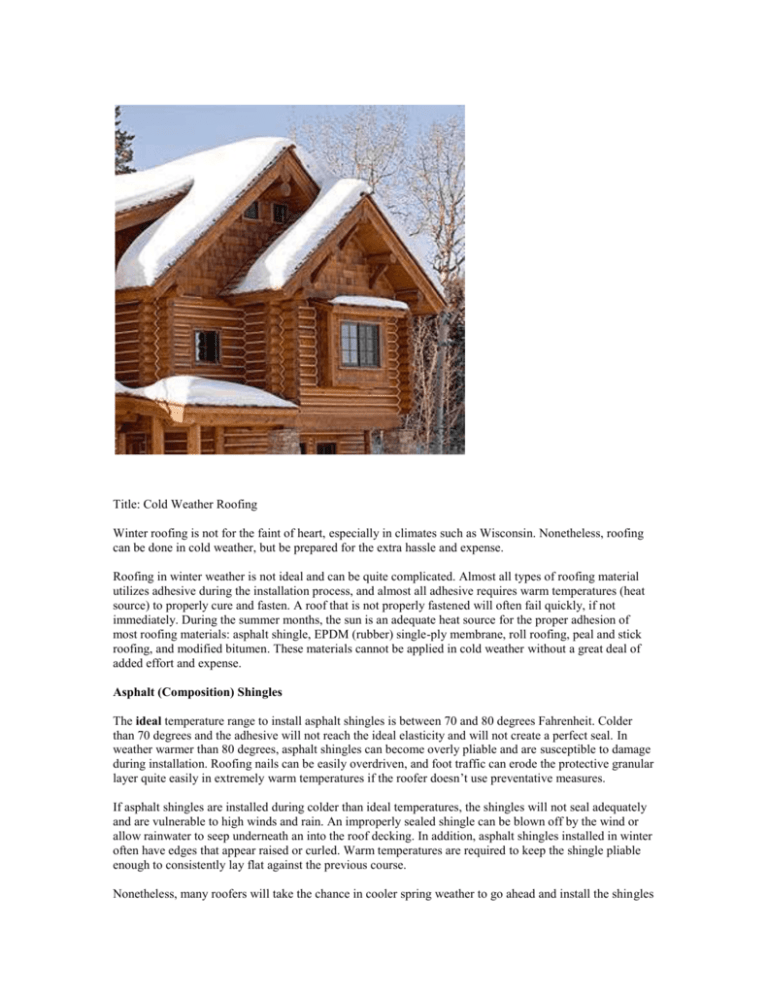
Title: Cold Weather Roofing Winter roofing is not for the faint of heart, especially in climates such as Wisconsin. Nonetheless, roofing can be done in cold weather, but be prepared for the extra hassle and expense. Roofing in winter weather is not ideal and can be quite complicated. Almost all types of roofing material utilizes adhesive during the installation process, and almost all adhesive requires warm temperatures (heat source) to properly cure and fasten. A roof that is not properly fastened will often fail quickly, if not immediately. During the summer months, the sun is an adequate heat source for the proper adhesion of most roofing materials: asphalt shingle, EPDM (rubber) single-ply membrane, roll roofing, peal and stick roofing, and modified bitumen. These materials cannot be applied in cold weather without a great deal of added effort and expense. Asphalt (Composition) Shingles The ideal temperature range to install asphalt shingles is between 70 and 80 degrees Fahrenheit. Colder than 70 degrees and the adhesive will not reach the ideal elasticity and will not create a perfect seal. In weather warmer than 80 degrees, asphalt shingles can become overly pliable and are susceptible to damage during installation. Roofing nails can be easily overdriven, and foot traffic can erode the protective granular layer quite easily in extremely warm temperatures if the roofer doesn’t use preventative measures. If asphalt shingles are installed during colder than ideal temperatures, the shingles will not seal adequately and are vulnerable to high winds and rain. An improperly sealed shingle can be blown off by the wind or allow rainwater to seep underneath an into the roof decking. In addition, asphalt shingles installed in winter often have edges that appear raised or curled. Warm temperatures are required to keep the shingle pliable enough to consistently lay flat against the previous course. Nonetheless, many roofers will take the chance in cooler spring weather to go ahead and install the shingles knowing warm summer weather is just around the corner. In most cases, asphalt shingles will eventually reach a high enough temperature to properly cure the adhesive, and the roof will function properly. In other cases, a storm producing high winds or driving rain could damage a shingle before it has a chance to seal properly. Asphalt shingles can be installed properly during cold weather (late fall and winter) only if additional, costly measures are taken. Most asphalt shingle manufactures require that a specialized adhesive is manually applied the each shingle if temperatures are below 40 degrees Fahrenheit. If shingles are applied below 40 degrees without the specialized adhesive, the manufacturer will void any warranty. EPDM (rubber) Single-Ply Membrane EPDM (rubber) membrane roofing is even more temperature sensitive that asphalt (composition) shingles. EPDM is joined together using an extensive amount of adhesive. The adhesive must have high temperatures to be pliable enough to install and cure. EPDM adhesive is very thick and hard to work with even at high temperatures. Manufacturers recommend temperatures be above 45 degrees Fahrenheit for installation. From experience, 45 to 55 degrees is not very practical unless a warm storage area is made available to keep the adhesive warm until the moment it is used. Similar to asphalt shingles, there are ways to install EPDM in winter, but it will significantly add to the costs. Emergency situations where EPDM has to be installed in cold weather will require building temporary, movable, tent-like structures in which portable heaters could be used to keep a small area at a time warm enough for installation. Extreme caution must be used in this circumstance since propane heat sources and flammable adhesive could result in a catastrophic explosion or fire. Other types of roofing mentioned earlier (roll roofing, peal and stick, and modified bitumen) simply should not be applied in winter. Added expense and effort will likely outweigh any benefit. Cold Weather Friendly Roofing Materials There are roofing materials in existence that can easily be installed in winter without much added expense. Low technology roofing materials such as cedar shakes or metal roofing can be installed safely and without any compromise of quality during cold weather. Metal and cedar are not as susceptible to temperature fluctuations, and very little, if any, adhesive is necessary for the proper installation of the material. Even so, there may be added expenses to consider since clean up can be difficult if snow is on the ground, or if snow has to be removed from a roof before installation can commence. These items will add manhours and increase your costs. In closing, cold weather roofing is almost never ideal. No matter which roofing material you choose, there will likely be added expense and compromise of quality. Consumers should try to avoid winter roofing if at all possible. If cold weather roofing cannot be avoided, hire a well-seasoned professional who understands how to properly overcome the difficulties. About the Author: Pro Roofing, LLC is a Licensed and Insured Roofing Contractor Located in Madison, WI. Pro Roofing, LLC has been Wisconsin’s Premier Residential and Commercial Roofer Since 1999.

